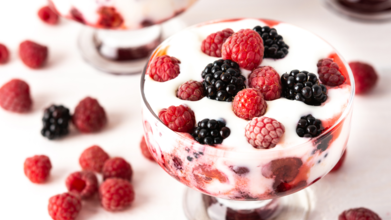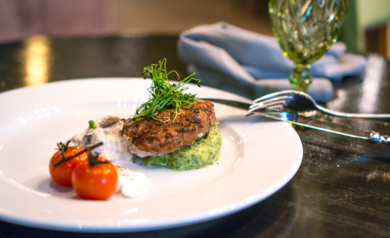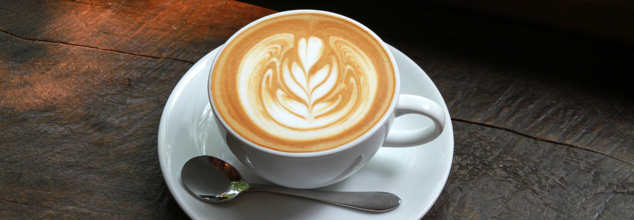- Health Conditions A-Z
- Health & Wellness
- Nutrition
- Fitness
- Health News
- Ayurveda
- Videos
- Medicine A-Z
- Parenting
- Web Stories
Naps Can Lead To Bigger Brains—But Only If You Rest For 30 Minutes Or Less

Credit: Canva
Taking a nap is a roll of the dice—sometimes, you rise refreshed, and other times, you wake more exhausted than before you closed your eyes. And there is a very solid reason behind it—the time spent resting. Recently, Thomas Michael Kilkenny, a sleep doctor, took the internet by storm when he said that there is a calculated apt period within which you can have a perfect nap. The director of the Institute of Sleep Medicine at Northwell Staten Island University Hospital said that there is a magic number of minutes when it comes to getting the most out of your midday snooze.
"Napping, when designed properly, can improve our daily lives," said Kilkenny. This stands particularly true if you do not get adequate sleep at night. According to experts, sleep restriction (not getting enough sleep) has significant negative effects on feelings of sleepiness, motor and mental performance and mood, as well as on metabolic, hormonal and immunological function."
A study published in Sleep Health found that taking a quick nap during the day may correlate with larger brain volume. The findings identified frontal, temporal, parietal and cerebellar regions with a larger grey matter volume in individuals who had six-to-eight hours of sleep compared to other sleep durations. Additionally, it also indicated that people who sleep for longer durations may have a smaller cerebellum, a part of the brain involved in movement and coordination. While this has not been observed before in healthy middle-aged and older adults, past research has linked a smaller cerebellum to poor sleep quality in teenagers and sleep disorders like narcolepsy and sleep apnea.
How Long Should We Take A Nap?
As per Kilkenny, naps should be relatively short and shouldn't last over 20-30 minutes. Shorter naps of around 10 minutes can also be helpful. "Sleeping longer can trigger the effects of sleep inertia. This is the feeling of continued sleepiness upon awakening." Kilkenny explained that sleep inertia can cause disorientation, depressed motor skills, poor balance, difficulty communicating and reasoning, moodiness, impaired memory, and irritability. Therefore, it becomes important to stick to a particular time frame for sleeping.Sleep Is Important For Memories Too!
Meanwhile, a new study suggested that the fact that you are remembering bad memories on days you did not have a good sleep could have a psychological impact. Sleep plays a major role in the recovery and healing of our body. It is no surprise that you feel a lot more tired and fatigued when you are sick because that is your body’s way of conserving energy so that it can be used to heal you instead. Many studies show that even when you have psychological issues like depression, anxiety etc. you are more likely to feel sleepy as your body is still in 'fix it' mode. Thereby, it becomes pivotal for us to pay attention to sleep to not just keep our brains healthy but also to boost our moods.
This 3-Ingredient Hack Backed By An NHS Surgeon Could Improve Gut And Muscle Health

Credits: Canva
Making healthy choices is not always easy, especially in today’s world, when everything around you is fast, and you feel like you are running out of time preparing that meal. Furthermore, where are the options? Supermarkets are packed with sugary temptations, while phones offer a constant stream of entertainment that often beats going for a walk or heading to the gym. But amid all this, some experts are trying to make well-being easier to understand, and more practical to achieve.
One of them is NHS surgeon Dr Karan Rajan, who has taken to social media to share no-nonsense health advice that doesn’t cost a fortune or require a medical degree to follow.
Health Made Simple and Accessible
With over five million followers on TikTok, Dr Rajan breaks down health science into everyday language. His new book, This Book May Save Your Life, offers what he calls “everyday health hacks to worry less and live better.”
He believes his popularity stems from the growing frustration with how difficult it can be to access healthcare, reports the Independent. “It’s harder to see a healthcare professional in some cases, particularly for chronic diseases,” Dr Rajan tells The Independent. “It’s also expensive if you are going down the private route. People are realising that prevention is a cheaper, more effective longer-term solution for health than treatment when burdened with disease.”
Nutrition and gut health are among the most common concerns he sees from his followers. Many people are curious about how to improve both, but often feel overwhelmed or unsure where to start.
The Three-Ingredient Snack for Gut and Muscle Health
Dr Rajan’s go-to suggestion? A simple, three-ingredient snack that supports both muscle function and gut health. Here’s what you’ll need:
- 80g raspberries (frozen or fresh)
- 1 tablespoon chia seeds
- 250g kefir yoghurt
How To Prepare This Easy Go-To Gut Friendly Meal?
To prepare it, microwave the raspberries for 30 seconds, then mash them to your preferred texture.
According to Dr Rajan, the deep red color is a sign of anthocyanins, powerful antioxidants that help feed the good bacteria in your gut. That small serving also contains around 5g of fibre.
Next, stir in the chia seeds. These not only thicken the mixture to a jam-like consistency but also add another 5g of fiber and mucilage, a substance that nourishes your colon’s friendly bacteria.
Top it off with a dollop of kefir yoghurt. It’s packed with probiotics and protein, making it an ideal base or topping. You can enjoy it as a stand-in for jam, or as a wholesome snack on its own.
For those with a sweet tooth, Dr Rajan suggests a spoonful of honey, but it’s optional.
Why Fiber Deserves More Attention
While protein gets plenty of attention for its muscle-building benefits, Dr Rajan says fiber is the real unsung hero of a healthy diet.
“Both protein and fiber are essential,” he explains. “There are plenty of foods and meal combos where you can get both, but if I had to over-index on one, it would be fiber.”
The recommended intake for adults is around 30g per day. Yet most people fall short, averaging less than 20g. That means many are missing out on benefits like better digestion, a stronger immune system, and even improved heart health.
Ozempic Is Shrinking Appetites And Restaurant Portions Too, Is It Helping Or Harming?

Credits: Freepik
Restaurants are quietly rewriting their menus—and it’s not just to keep up with seasonal flavors or dietary fads. The real driver? A class of injectable weight-loss drugs called GLP-1 receptor agonists, most notably Ozempic, Wegovy, Mounjaro, and Zepbound.
Originally developed to manage Type 2 diabetes, these medications have now skyrocketed in popularity for one big reason: they help people lose weight by drastically reducing appetite. And this isn’t a trend limited to influencers on TikTok or celebrity endorsements. According to a May 2025 report by FAIR Health, about 2% of American adults—roughly 6 million people—are currently using GLP-1 drugs for weight management. That’s not a niche group. That’s a market with teeth, and the food industry is taking note.
Why Restaurants Are Shrinking Their Plates?
Across the US, eateries are rolling out what’s being dubbed the “Ozempic menu”—smaller, more protein-rich portions that cater to those on GLP-1s who can’t eat the way they used to. These are not your typical “light bites” or calorie-counted diet meals from the 2000s. Instead, they’re designed for people who now feel full after just four bites, as one TikTok user described: “I took four little bites, and I can’t eat any more of my food 'cause I’m full.”
The biology backs it up. GLP-1 drugs mimic the action of gut hormones that signal satiety to the brain. The result? Smaller appetites, reduced cravings, and a tendency to avoid heavy, greasy, or ultra-processed foods but it’s not just about how much people are eating—it’s also about what they’re eating.
For decades, restaurants and packaged food brands pushed the “bigger is better” model. Think supersized fries, 20-ounce sodas, and all-you-can-eat buffets. But that equation is starting to collapse under the influence of GLP-1s.
New research from the University of Arkansas Agricultural Experiment Station shows that people on these drugs consume about 700 fewer calories per day and steer clear of processed snacks, red meat, refined grains, and sugary drinks. Instead, their diets trend toward fruit, leafy greens, water, and high-protein foods.
It’s a massive shift—and restaurants are adapting fast. Instead of pushing larger portions to increase perceived value, some are offering nutrient-dense meals in smaller servings, optimized for digestion and satiety. Think protein-packed bowls, cauliflower-crust pizzas, or sandwich melts with whole grains—all designed to be GLP-1-friendly.
Major food companies aren’t sitting this out. Nestlé launched a frozen food line in 2024 specifically tailored to consumers on GLP-1s. The meals aren’t just low-cal—they’re balanced to maintain muscle mass, avoid nutrient deficiencies, and support healthy metabolism, which are growing concerns for long-term users of these medications.
Unlike the old “diet food” playbook—low fat, low everything—today’s approach focuses on preventing muscle loss, fortifying foods with fiber and vitamins, and adjusting textures for easier digestion.
Expect to see more brands follow suit, with single-serving sizes, high-protein snacks, and products that offer real functional value—not just calorie control.
The shift toward GLP-1-friendly dining is more than a marketing gimmick. It reflects a deep change in how Americans are interacting with food. Diners who used to order a full entrée might now split a main course or order just an appetizer. Chefs are learning to rethink portion sizes without compromising taste or presentation.
In upscale restaurants, this may look like smaller tasting menus. In fast-casual spots, it may mean mini versions of signature bowls or build-your-own plates that offer controlled portions with customizable nutrients.
And it's not only about smaller sizes—menus are also evolving to exclude trigger foods that can worsen GLP-1 side effects, like fried items or ultra-rich desserts. Patrons on these drugs are more sensitive to nausea and stomach discomfort, so restaurants are adjusting recipes accordingly.
Why Is Grocery Spending Already Shrinking?
A Cornell University study recently found that households with at least one GLP-1 user spent 6% less on groceries overall. That’s a red flag for the food industry but also an opportunity to pivot toward value through quality, not quantity.
Instead of upselling bigger boxes of snacks or mega-size frozen dinners, grocers and food brands will need to rethink how to stay relevant to a customer who eats less but wants more nutrition per bite.
Are Weight Loss Drugs Changing How We Eat?
We’re living through a transformation in the food landscape, where demand isn’t driven by cravings but by pharmacology. For years, weight-loss diets were built around willpower. Now, with drugs like Ozempic, the body’s natural hunger cues are being reprogrammed—and the entire food ecosystem is scrambling to catch up.
Restaurants creating Ozempic menus are just the beginning. As the number of GLP-1 users continues to grow—possibly reaching tens of millions in the coming years—the very definition of what and how we eat is being rewritten.
Whether you’re in a high-end bistro or grabbing takeout, expect to see menus shrink, protein rise, and food marketing get a functional, health-forward upgrade.
The rise of GLP-1 drugs is reshaping the food industry—from menus and grocery shelves to portion sizes and nutrient density. Ozempic menus aren’t a fad—they’re a reflection of how medicine is changing mealtime.
Coffee Could Reduce The Risk Of This Disease That Affects 830 Million People In The World

(Credit-Canva)
Diabetes may seem like a non-issue, however each year we see an alarming rate of increase in the number of people who have diabetes. According to the World Health Organization, the number of people who had diabetes rose from 200 million in 1990 to 830 million in 2022. An alarming rise as such has prompted many people to call it a silent health epidemic. As more and more people start taking it more seriously, researchers have also found ways we can reduce the risk of it. What if they told you that your morning coffee could be a way too?
For many, coffee is an essential part of the day. In the UK, it has even become the nation's favorite hot drink, with people consuming around 98 million cups daily. While it's a great morning pick-me-up, new research suggests that this popular brew could also offer significant health benefits, especially in lowering the risk of developing type 2 diabetes.
Link Between Coffee and Type 2 Diabetes
Type 2 diabetes affects millions of people, and new findings suggest that a daily coffee habit could help prevent it. Researchers in South Korea analyzed data from 149 different studies to explore how coffee affects the body's metabolic processes that are connected to the development of this condition.
According to their findings, drinking about three to five cups of coffee per day may provide benefits from natural compounds called polyphenols. The researchers specifically looked at five types of these compounds found in coffee and studied their effects on key organs like the small intestines, pancreas, liver, and other tissues.
How Coffee Protects Your Body
The study discovered that drinking black coffee every day can give you several health boosts. These good effects include:
- Keeping your blood sugar steady.
- Calming down swelling in your body.
- Making your body better at using sugar, thanks to improved insulin sensitivity.
- Protecting your cells like a tiny shield, because it acts as an antioxidant.
- Helping your body handle sugar more effectively.
What's really interesting is that both regular coffee and decaf coffee showed similar good results. This tells us that the benefits, like lowering your risk of type 2 diabetes by 20% to 30%, come from special parts of the coffee itself, not just the caffeine. The scientists think these unique coffee ingredients hold a lot of promise for preventing and managing type 2 diabetes.
Expert Opinions and Cautions
Other health experts agree that coffee naturally offers good health benefits and can fit into a healthy way of living. One professor pointed out that coffee beans have about 200 different natural substances. Some of these are good on their own, and sometimes they work together to create even more helpful effects.
However, some experts also give a word of caution. While lowering the risk by 20-30% is a very big deal, this study mainly looked at past research done in labs. This means it might not fully consider everything that happens in real life, like how healthy coffee drinkers are overall or what their other habits are.
The most important message is that coffee's benefits come from drinking it black, without adding sugar or cream. While people who drink coffee regularly can enjoy these possible health advantages, it's still smart to be careful about how much caffeine you have, especially if you have heart problems. If too much caffeine makes you feel jittery, decaf coffee is a great choice because it removes the caffeine but keeps all the good stuff.
© 2024 Bennett, Coleman & Company Limited



